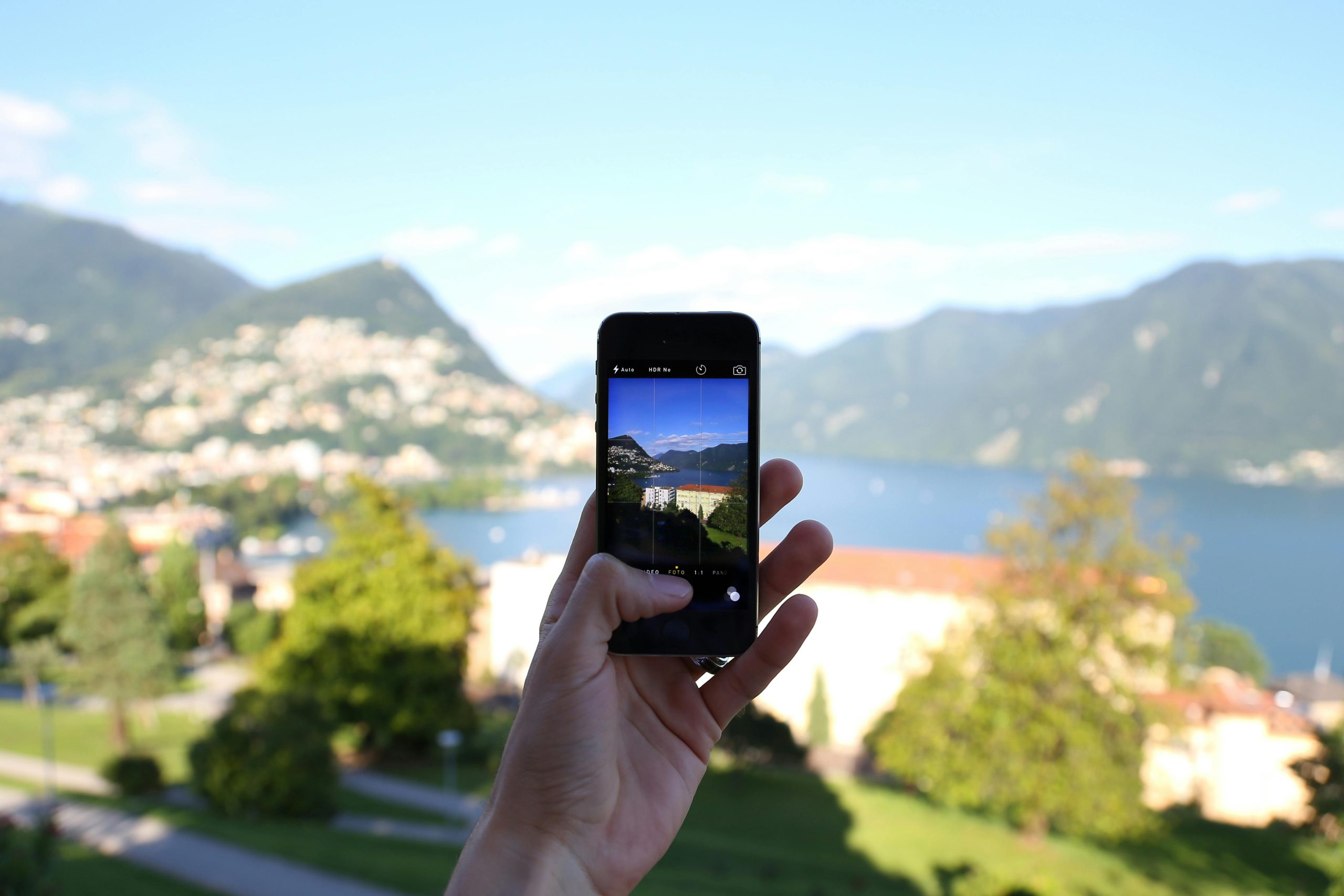How to Take a Screenshot: A Comprehensive Guide

In today’s digital world, capturing what’s on your screen is an essential skill, whether for troubleshooting, sharing information, or preserving memories. This guide provides a comprehensive, step-by-step approach to taking screenshots across various devices and operating systems, incorporating the latest methods and best practices relevant in 2024 and 2025.
Understanding Screenshots
A screenshot, also known as a screen capture or screen grab, is a digital image of the contents of a computer’s display. It’s a powerful tool for communication and documentation, allowing users to visually represent anything from a complex error message to a funny meme.
Why Take Screenshots?
- Troubleshooting: Capturing error messages or software behavior to share with IT support.
- Documentation: Recording steps in a process or instructions for others.
- Sharing: Quickly showing a friend a website, article, or social media post.
- Saving Information: Preserving content that might disappear or change online.
- Creative Uses: Creating memes, collages, or visual aids.
Taking Screenshots on Windows
Windows offers several built-in methods for capturing your screen, ranging from simple full-screen captures to more targeted selections.
Method 1: Print Screen (PrtScn) Key
The most basic method involves the PrtScn key, typically located on the top row of your keyboard, often near the F keys.
Full Screen Capture
- Press the PrtScn key. This captures your entire screen and copies it to your clipboard.
- To save the screenshot, you’ll need to paste it into an image editing program like Paint, Photoshop, or even a Word document.
Active Window Capture
- Press Alt + PrtScn. This captures only the currently active window and copies it to your clipboard.
- Paste into an image editor to save.
Saving Full Screen Directly (Windows 10 & 11)
- Press Windows key + PrtScn. Your screen will briefly dim, indicating that a screenshot has been taken.
- The screenshot is automatically saved in the “Screenshots” folder within your “Pictures” library (C:\Users\[Your Username]\Pictures\Screenshots).
Method 2: Snipping Tool
The Snipping Tool is a more versatile utility that allows for custom screen captures. It has been a staple in Windows for years and continues to be a reliable option.
Accessing the Snipping Tool
- Search for “Snipping Tool” in the Windows search bar and open the application.
Using the Snipping Tool
- Click “New”.
- Choose a “Mode” from the dropdown menu:
- Free-form Snip: Draw any shape around the area you want to capture.
- Rectangular Snip: Drag the cursor to draw a rectangle around the desired area.
- Window Snip: Click on a specific window to capture it.
- Full-screen Snip: Captures the entire screen.
- After selecting the area, the screenshot will appear in the Snipping Tool window, where you can annotate it, save it as a JPG, PNG, or GIF file, or copy it to the clipboard.
Method 3: Snip & Sketch (Windows 10 & 11)
Snip & Sketch is the modern successor to the Snipping Tool, offering enhanced features and a more streamlined interface. It can be accessed quickly via a keyboard shortcut.
Accessing Snip & Sketch
- Press Windows key + Shift + S.
- Your screen will dim, and a small toolbar will appear at the top, allowing you to select your capture mode:
- Rectangular Snip
- Freeform Snip
- Window Snip
- Fullscreen Snip
- Once you’ve made your selection, the screenshot is copied to your clipboard, and a notification will appear. Clicking the notification opens the Snip & Sketch app for editing and saving.
Additional Features in Snip & Sketch
- Marking Tools: Use pens, highlighters, and erasers to annotate your screenshots.
- Cropping: Easily crop the image to focus on specific details.
- Saving: Save your annotated screenshots in various formats.
Taking Screenshots on macOS
macOS provides intuitive keyboard shortcuts for capturing your screen, offering flexibility for different needs.
Method 1: Keyboard Shortcuts
Apple’s macOS is known for its user-friendly shortcuts.
Full Screen Capture
- Press Command + Shift + 3.
- The screenshot is automatically saved to your desktop as a .PNG file.
Selected Portion Capture
- Press Command + Shift + 4.
- Your cursor will turn into crosshairs. Click and drag to select the area you want to capture.
- Release the mouse button to take the screenshot. It will be saved to your desktop.
- To cancel the selection, press the Esc key.
Capturing a Specific Window or Menu
- Press Command + Shift + 4, then press the Spacebar.
- Your cursor will change to a camera icon. Move it over the window or menu you wish to capture.
- Click to take the screenshot. It will be saved to your desktop.
- To include a shadow effect with the window capture, hold down the Option key while clicking.
Method 2: Screenshot App (macOS Mojave and later)
Introduced in macOS Mojave, the Screenshot app offers a more comprehensive interface for screen capturing and recording.
Accessing the Screenshot App
- Press Command + Shift + 5.
- A control bar will appear at the bottom of the screen with options for capturing the entire screen, a selected window, or a selected portion. You can also choose to record your screen.
Using the Screenshot App Interface
- Capture Entire Screen: Click the icon that looks like a screen with a box around it.
- Capture Selected Window: Click the icon that looks like a window with a box around it.
- Capture Selected Portion: Click the icon that looks like a dashed box. Drag to select the area.
- Options Menu: Click the “Options” button to set a timer, choose where to save the screenshot (Desktop, Documents, Clipboard, Mail, Messages, Preview), and more.
- Click “Capture” to take the screenshot.
Taking Screenshots on Mobile Devices
Screenshots are just as vital on smartphones and tablets as they are on computers.
Android
The method for taking screenshots on Android devices can vary slightly depending on the manufacturer and Android version, but the most common methods are:
Common Method (Most Android Devices)
- Press and hold the Power button and the Volume Down button simultaneously for a second or two.
- You’ll typically see a visual confirmation (like a flash or animation) and hear a shutter sound.
- The screenshot is usually saved in the “Screenshots” folder in your gallery or Google Photos.
Alternative Methods (Manufacturer Specific)
- Samsung: Some Samsung devices allow you to swipe the edge of your hand across the screen to capture it.
- Gestures: Some devices offer three-finger gestures (e.g., swipe down with three fingers) to take a screenshot. Check your device’s settings for gesture options.
- Quick Settings Panel: Some Android versions or manufacturer skins include a “Screenshot” tile in the quick settings panel (accessed by swiping down from the top of the screen).
Android 11 and Later: Scrolling Screenshots
Many newer Android devices support scrolling screenshots, allowing you to capture more than what’s visible on the screen at once.
- Take a screenshot using one of the methods above.
- After the screenshot is taken, a preview will appear, often with a “Scroll” or “Capture more” button.
- Tap this button repeatedly to scroll down and capture more content. The screenshot will automatically stitch together the captured sections.
iOS (iPhone and iPad)
Capturing your screen on iOS devices is straightforward.
iPhone X and Later (with Face ID)
- Press and hold the Side button (on the right side of the device) and the Volume Up button (on the left side) simultaneously.
- Release both buttons quickly.
- A thumbnail of the screenshot will appear in the bottom-left corner. Tap it to edit, share, or save. If you don’t tap it, it will be automatically saved to your Photos app.
iPhone SE (2nd generation), iPhone 8 and Earlier, and all iPads with a Home button
- Press and hold the Side button (or Top button on older iPads) and the Home button simultaneously.
- Release both buttons quickly.
- A thumbnail will appear in the bottom-left corner for editing or saving. Otherwise, it’s saved to your Photos app.
AssistiveTouch for Screenshots
If you have difficulty with button combinations, you can use AssistiveTouch:
- Go to Settings > Accessibility > Touch > AssistiveTouch and turn it on.
- Tap the virtual AssistiveTouch button that appears on your screen.
- Tap “Device”, then “More”, and then “Screenshot”.
Scrolling Screenshots on iOS
Similar to Android, iOS allows for scrolling screenshots, but only for specific content like web pages in Safari or notes.
- Take a screenshot using the button combination.
- Tap the thumbnail that appears in the bottom-left corner.
- At the top of the editing screen, you’ll see options for “Screen” and “Full Page” (if available).
- Tap “Full Page” to capture the entire scrollable content.
- You can then crop, annotate, and save the full-page screenshot as a PDF to your Files app.
Advanced Screenshot Techniques and Tools
Beyond the basic methods, various tools and techniques can enhance your screenshot capabilities.
Scrolling Screenshots (Advanced)
While built into some mobile OS versions, dedicated desktop tools offer more robust scrolling screenshot functionality.
- Browser Extensions: Many browser extensions (e.g., “GoFullPage” for Chrome, “Awesome Screenshot”) can capture entire web pages, including content that requires scrolling. These are particularly useful for documenting long articles or complex web applications.
- Dedicated Software: Programs like ShareX (Windows) or Monosnap offer advanced scrolling capture features for entire windows or specific application content.
Annotating and Editing Screenshots
Often, a raw screenshot needs annotation to convey specific points.
- Built-in Tools: Windows’ Snip & Sketch and macOS’s Screenshot app (via Command+Shift+5) offer basic markup tools like pens, highlighters, and text.
- Third-Party Software: For more advanced editing, consider tools like:
- Greenshot (Windows): Free and open-source, offering extensive annotation and sharing options.
- Skitch (macOS, iOS): From Evernote, provides easy-to-use annotation tools for text, arrows, and shapes.
- Adobe Photoshop/GIMP: For professional-level editing.
Cloud Storage and Sharing
Many screenshot tools integrate with cloud services for easy sharing.
- ShareX (Windows): Automatically uploads screenshots to various services like Imgur, Google Drive, or Dropbox, providing a shareable link.
- Lightshot: Allows you to select a region, edit it, and upload it to their server for a shareable link.
Recent Developments and Future Trends (2024-2025)
The landscape of screen capturing continues to evolve, with a focus on AI integration and seamless cross-platform experiences.
AI-Powered Screenshot Tools
Emerging tools are leveraging Artificial Intelligence to offer enhanced functionalities:
- Automatic Annotation: AI can identify key elements in a screenshot (e.g., error messages, specific UI elements) and suggest annotations or summaries.
- Content Analysis: AI can analyze the content of a screenshot to provide context, extract text (OCR), or even translate it.
- Smart Cropping and Enhancement: AI algorithms can automatically crop screenshots to the most relevant content or enhance image quality.
Cross-Platform Integration
As users juggle multiple devices, seamless screenshot transfer and management are becoming more critical.
- Cloud Syncing: Services that sync screenshots across desktop and mobile devices are gaining popularity.
- Universal Clipboard: Features like Apple’s Universal Clipboard allow screenshots taken on one device to be pasted directly onto another within the same ecosystem.
Privacy and Security
With increased awareness of data privacy, screenshot tools are also focusing on secure handling of captured content.
- End-to-End Encryption: For cloud-based sharing, end-to-end encryption ensures that only the intended recipient can view the screenshot.
- Secure Storage: Options for local, encrypted storage of screenshots are becoming more important for sensitive information.
Conclusion
Mastering the art of taking screenshots is a fundamental digital skill. Whether you’re a student, a professional, or a casual user, understanding the various methods available for your specific device and operating system will significantly enhance your productivity and communication. As technology advances, expect even more intelligent and integrated solutions for capturing and sharing your digital world.










